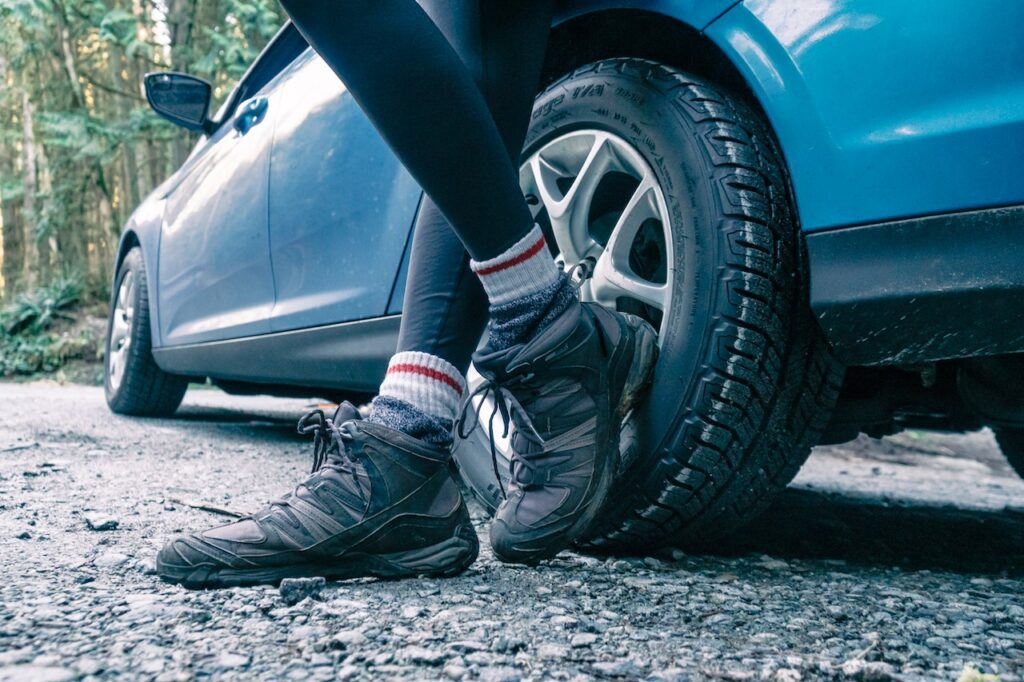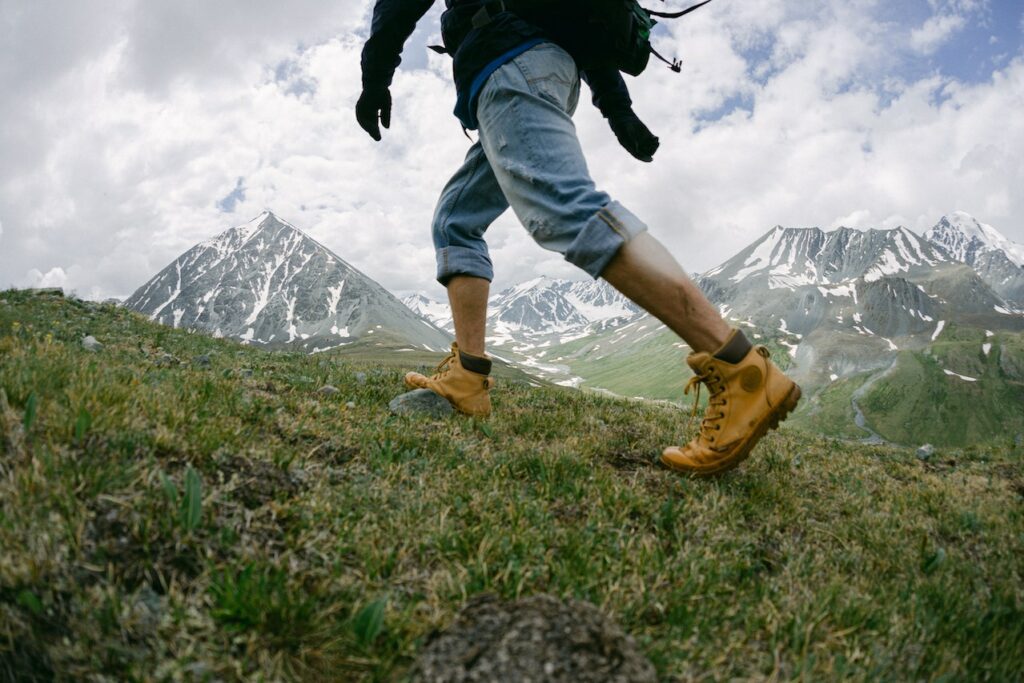Table of Contents
The defining moment of choosing hiking boots can make all the difference in your hiking experience. The best ones keep your feet comfortable and dry and also provide the support you need on rough terrain.
Are you an adventurer that loves to go to the highlands and mountains? There are a lot of different types of hiking boots out there, so how do you pick the ones you need?

In this guide, you’ll learn everything you need to know about choosing hiking boots.
5 Reasons Why You Should Learn the Basics of Choosing Hiking Boots
Hiking is an adventure-filled way to get outside and explore nature. People who want to have fun, become healthy and involve themselves in a rewarding activity consider hiking as their favorite.
However, choosing the right hiking boots is essential for ensuring a safe and comfortable experience.
Prevent injuries
Choosing the right hiking boots is crucial for preventing injuries. Hiking often involves walking on rough, uneven terrain, and wearing inappropriate shoes can cause foot injuries such as blisters, sprains, or even fractures.
Proper hiking boots provide you with the necessary support and protection for your feet and ankles. The best hiking boots will help in reducing the risk of injuries.
Increase Comfort
Hiking can be a physically demanding activity, and wearing uncomfortable shoes can make the experience unpleasant. Hiking boots with proper cushioning, arch support, and a good fit can increase comfort and reduce fatigue during the hike.
Ensure Traction
Hiking on wet or slippery surfaces can be dangerous. Wearing shoes without proper traction can increase the risk of slipping or falling.
Hiking boots with adequate traction, such as rubber soles with deep lugs, can provide the necessary grip and stability.

Adapt to Weather Conditions
Different weather conditions require different types of hiking boots. Hiking in snowy conditions requires boots with insulation and waterproofing. Meanwhile, hiking in hot and dry conditions requires breathable boots.
Choosing the appropriate hiking boots for the weather conditions will ensure comfort and safety during the hike.
Increase durability
Investing in high-quality hiking boots can increase durability. Cheap or poorly made hiking boots can wear out quickly, requiring frequent replacements.
Choosing durable hiking boots made with high-quality materials can withstand rough terrain and provide long-lasting comfort and support.
5 Things to Remember on Choosing Hiking Boots
Consider Your Hiking Style
First, you need to consider your hiking style. Determine if you typically go on day hikes or multi-day backpacking trips. Also, decide if you hike on flat, well-maintained trails, or do you tackle rough, rocky terrain. Your hiking style will dictate the type of boots you need.
For day hikes on well-maintained trails, a lightweight hiking shoe or low-cut hiking boots may be suitable. These boots are typically more flexible and breathable, making them ideal for shorter hikes on easier terrain.
Are you into backpacking or a more challenging terrain? A mid-cut or high-cut hiking boot is likely a better option. These boots provide more ankle support and protection and are better suited for longer hikes and rough terrain.

Know Your Foot Type
Another crucial factor to consider when choosing hiking boots is your foot type. Determining your foot type can help you find a boot that fits correctly.
You also need to choose a pair that provides the support and comfort you need.
If you have a high arch, look for boots with a high arch support. Look for boots with more cushioning and support to compensate for the lack of arch support if you have flat feet.
It is highly recommended to know the width of your feet. Boots that do not fit well with your feet can cause discomfort and lead to foot problems.You can try on boots in different widths to find the best fit for your feet.
Consider the Materials
The materials used in hiking boots have a significant impact on their performance and durability. Leather boots are typically more durable and provide excellent support. Yet, they can be heavy and take longer to break in.
Synthetic materials like nylon and mesh, are often lighter and more breathable than leather. This makes them ideal for warmer weather and shorter hikes. However, they may not provide as much support or durability as leather boots.
Gore-Tex is a popular waterproofing material used in hiking boots. It is a breathable, waterproof membrane that can keep your feet dry in wet conditions. If you plan on hiking in wet or snowy conditions, buy boots with Gore-Tex or a similar waterproofing material.
Fit is Key
Perhaps the most crucial factor to consider when choosing hiking boots is fit. A poorly fitting boot can cause discomfort and lead to foot problems, including blisters and soreness.
Make sure to wear the socks you plan on wearing while hiking when choosing the best hiking boots for you. Lace the boots tightly and walk around the store to ensure they fit snugly but are not too tight or too loose.
Pay attention to how your feet feel in the boots. Your toes should have enough room to wiggle. Also, your heels should not slide up and down. If the boots feel uncomfortable or cause any discomfort, try a different size or style.
Break Them In
After accomplishing the previous steps, it is essential to break them in before hitting the trail. Wearing new boots on a long hike can lead to blisters and foot pain.
Start by wearing your boots around the house or on short walks to help them mold to your feet. Gradually increase the length of your walks and hikes, giving your feet time to adjust to the boots.
Conclusion: Choosing Hiking Boots
Choosing hiking boots can be overwhelming. Taking the time to consider your hiking style, foot type, materials, and fit can make all the difference in your hiking experience. The right pair of boots will keep your feet comfortable, dry, and supported. It will also allow you to focus on the beautiful scenery around you.
Remember that investing in a high-quality pair of hiking boots is worth it in the long run. Quality boots will last longer and provide better support and protection than cheaper, lower-quality boots.
Finally, don’t forget to take care of your boots. Proper maintenance, including cleaning and waterproofing, can extend the life of your boots and keep them performing at their best.
Happy hiking!



